Chapter 1 | CLASSICAL ARCHITECTURE
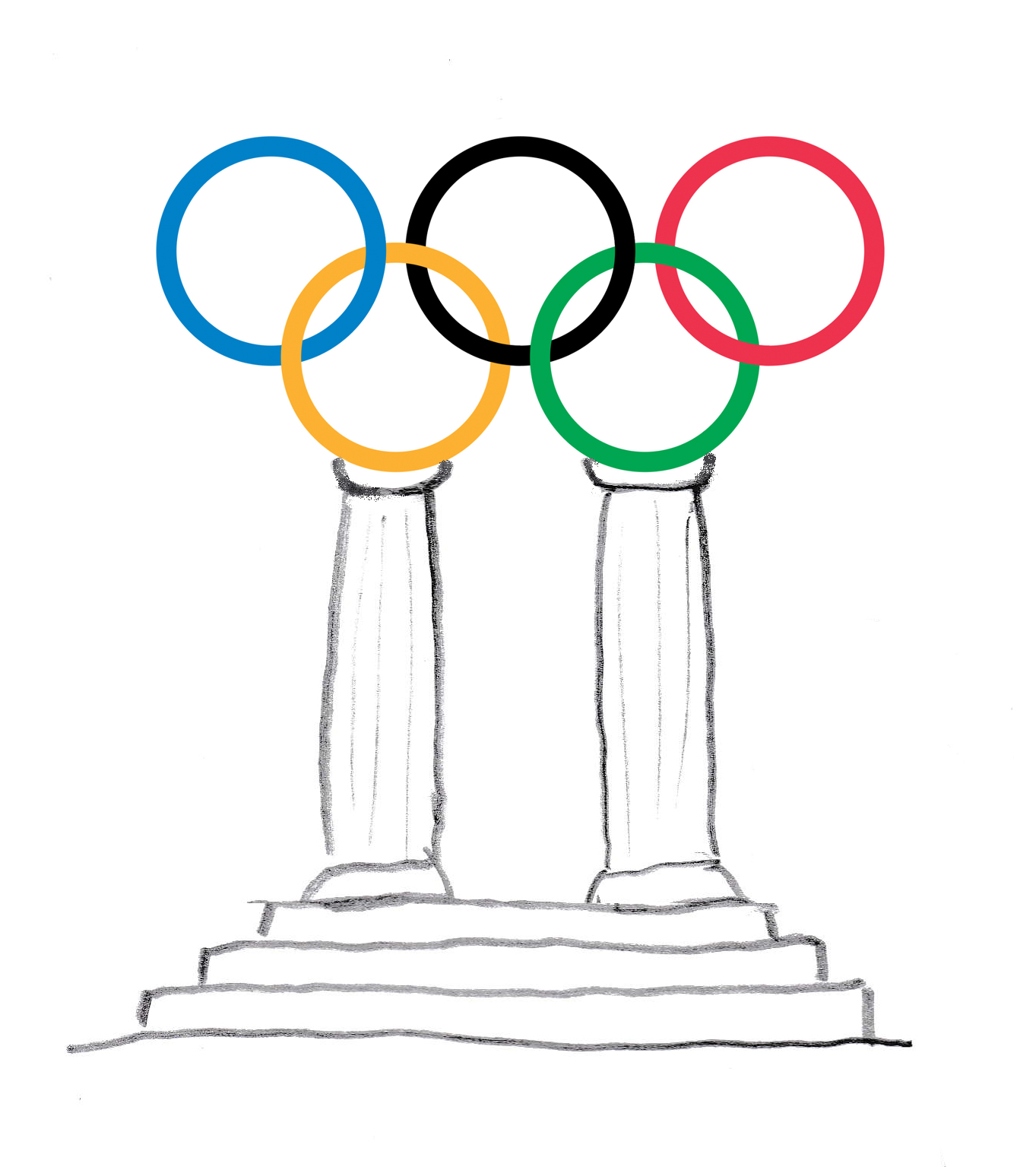
Exercise 1: Columns are intended to carry something. In a fantasy drawing this could be anything (in my example the Olympic rings). Draw the two columns with the stairs underneath and let them carry something of your choice.
During the time of the ancient Greeks and the first Olympic games, from about 500 BC, temples were built in a style that we now call classical architecture.The most recognizable is the use of columns supporting a crossbeam and the roof, with a triangular shape (tympanum) at the front, sometimes decorated with sculpture. A column has a base, a shaft (the body) and a head or capital. Capitals can look quite basic, but can also be decorated with all kinds of curls and leaves.
Exercise 2: The temple in this picture is not yet finished. Only the left side is done. Try to finish this temple on the right side.

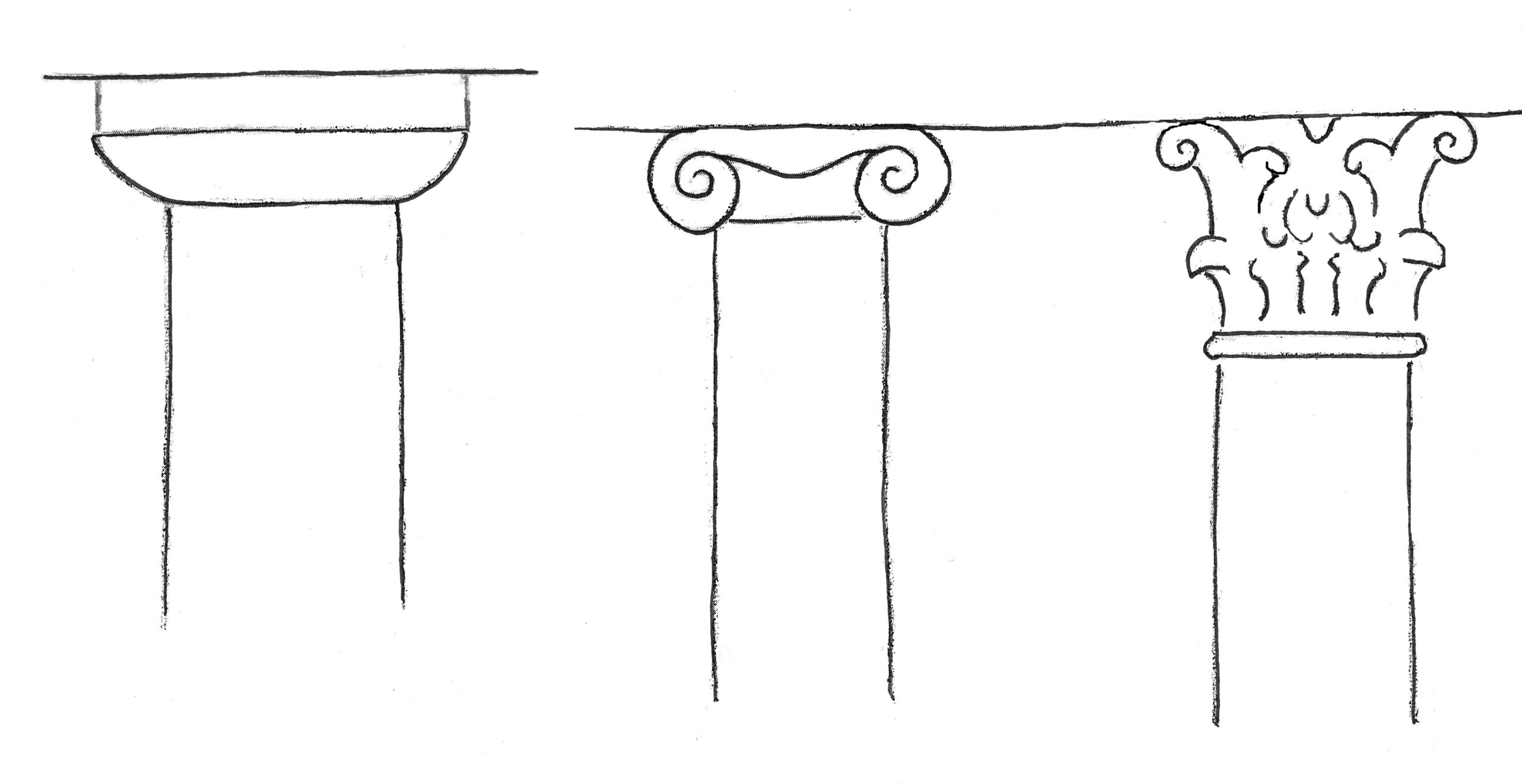
The shape of columns is often used as a flat decoration of facades. We then call them pilasters.
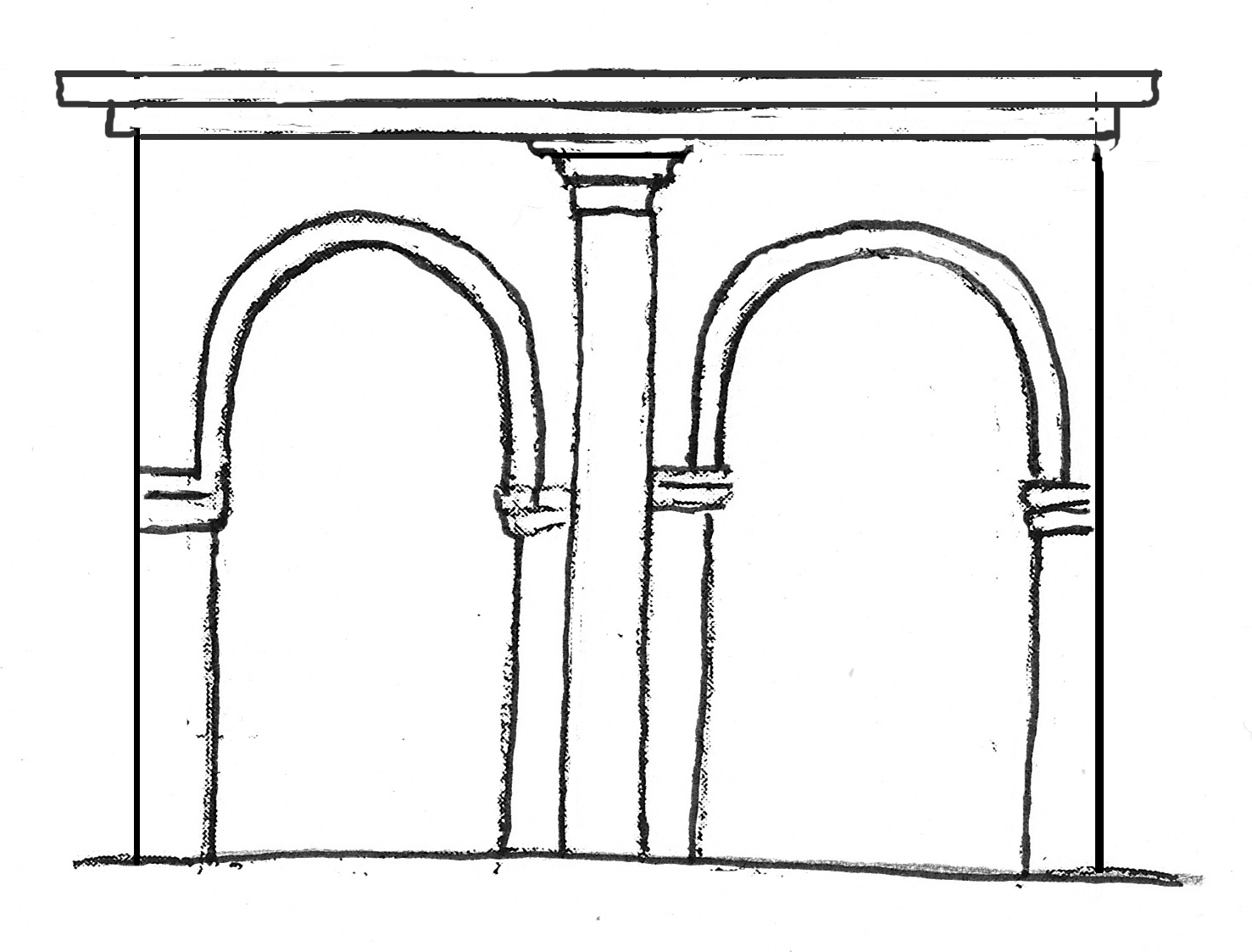

The ancient Romans adopted the Greek architectural style but also invented a type of concrete with which they could also make arches, domes and enormous vaults.
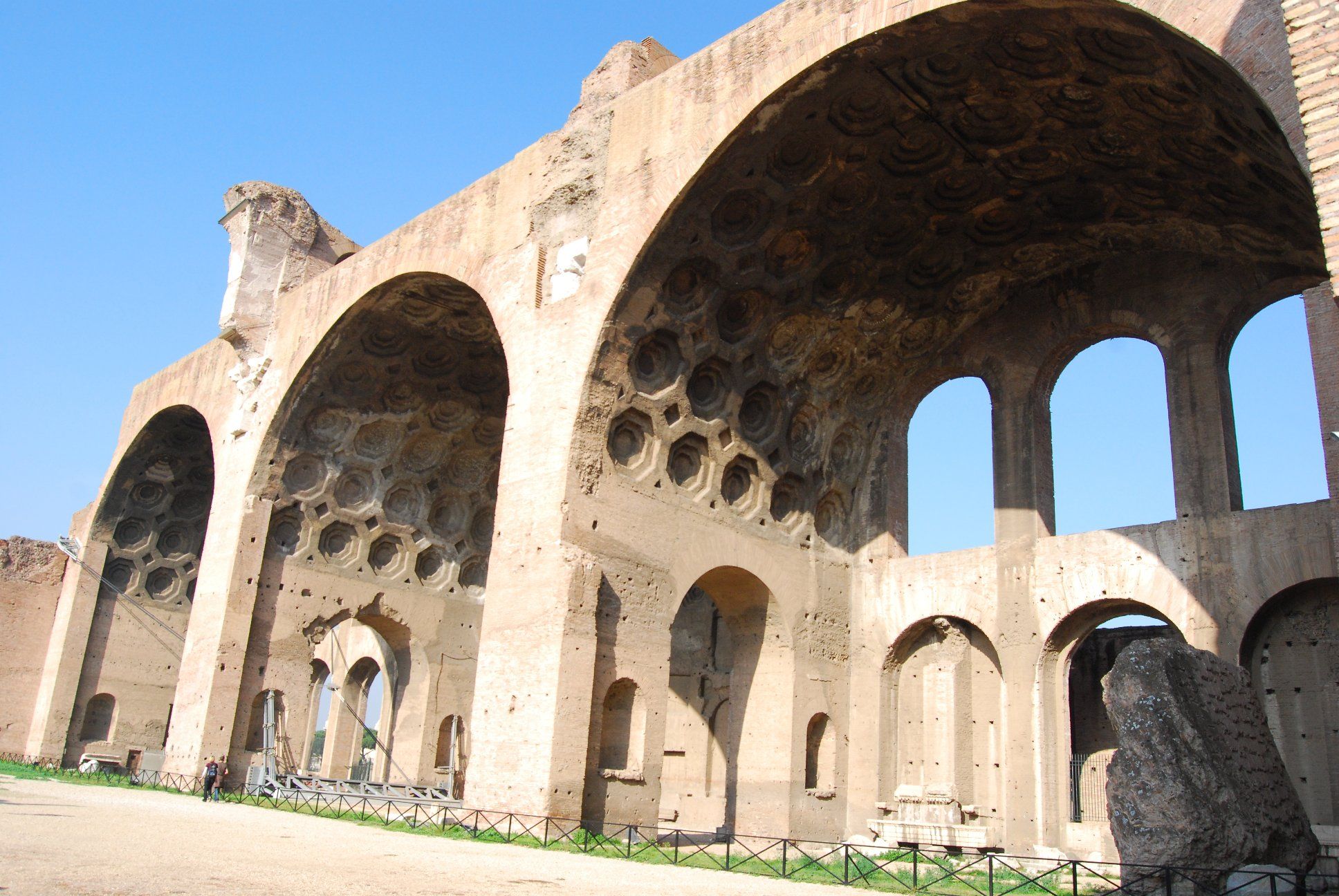
Exercise 3: The following image shows all kinds of individual building parts and decorations from the time of the ancient Greeks and Romans. Try stacking parts on top of each other or next to each other in a drawing, just like it’s done with Lego blocks or wooden stacking block toys. It may become a unique construction.
Tip: You can also do this exercise together with someone, as a game: You take turns adding something to the structure.
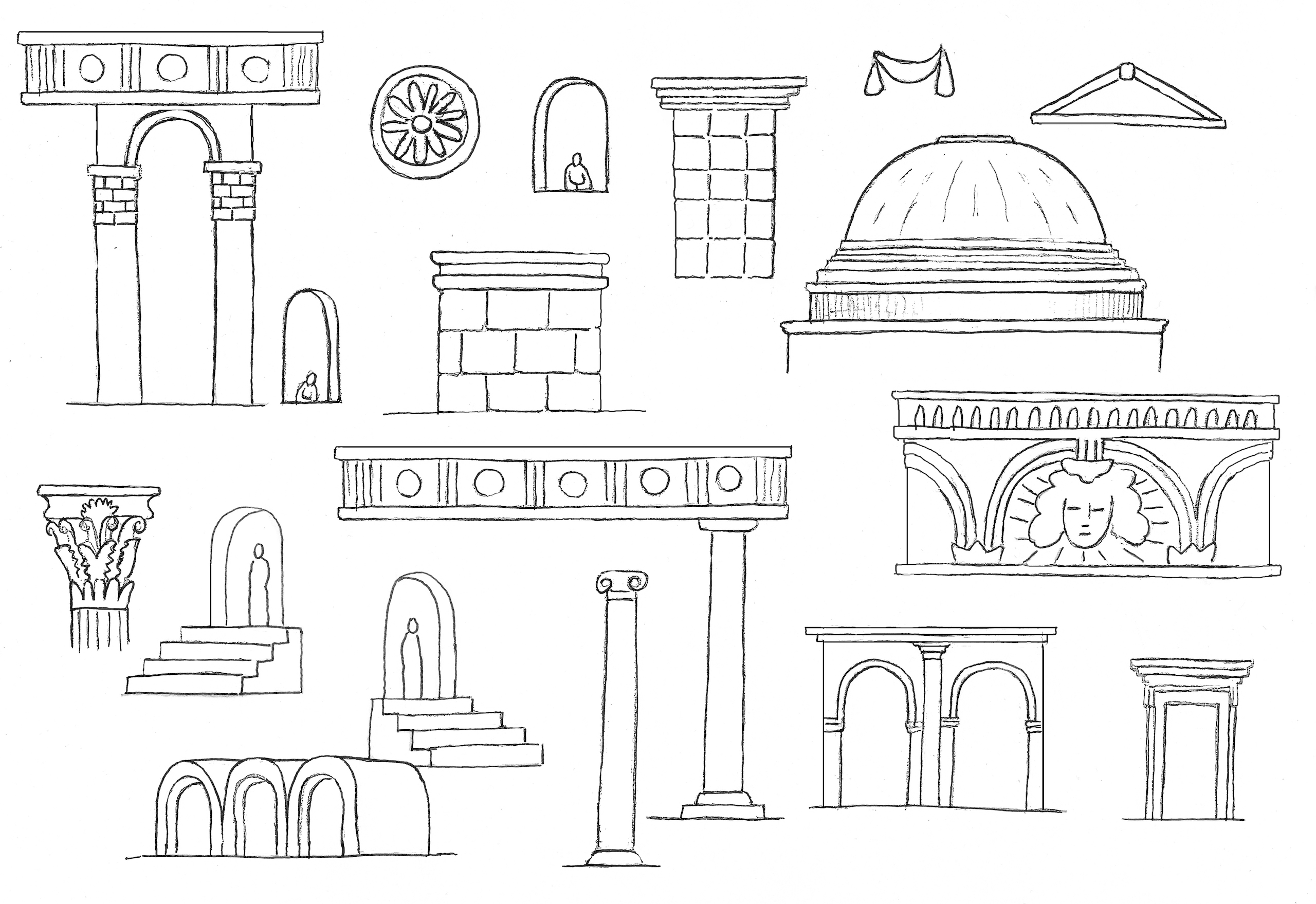
I show you some some examples how to stack and connect classical parts like Lego bricks.
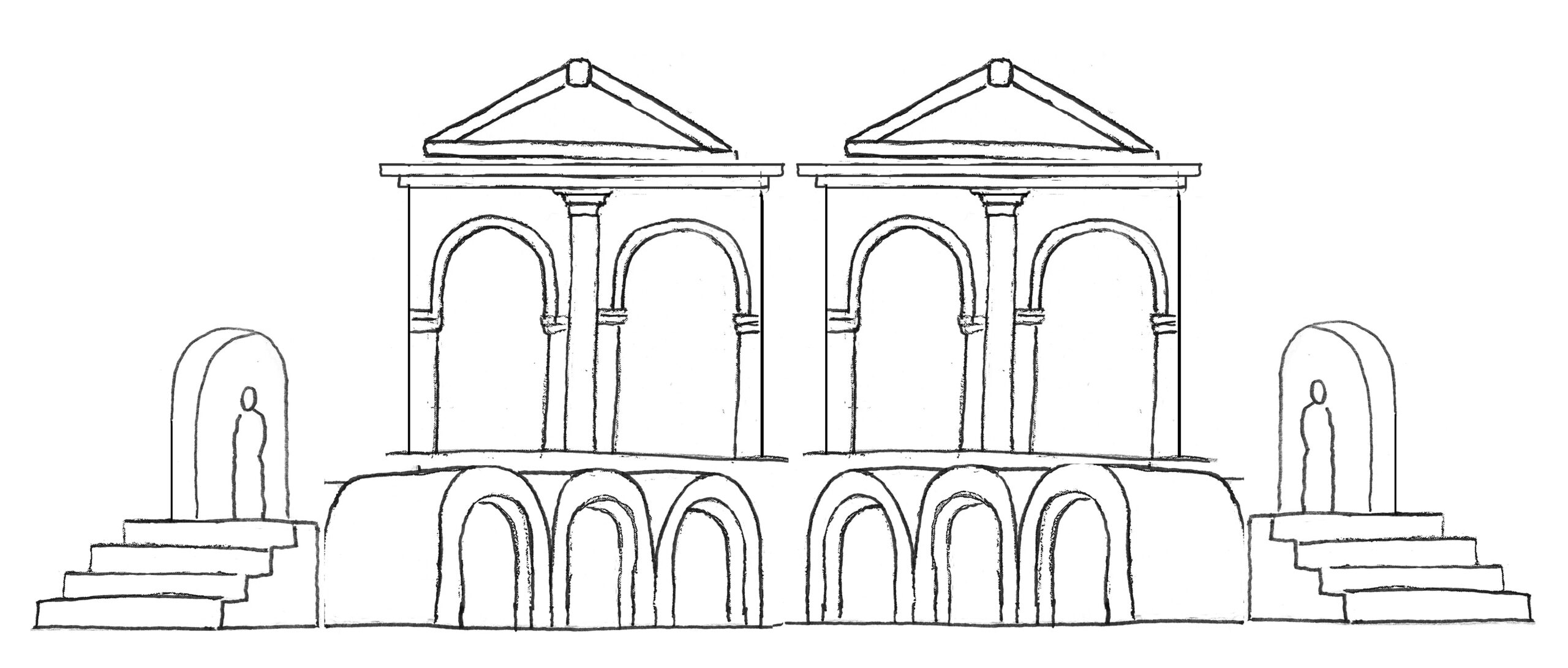
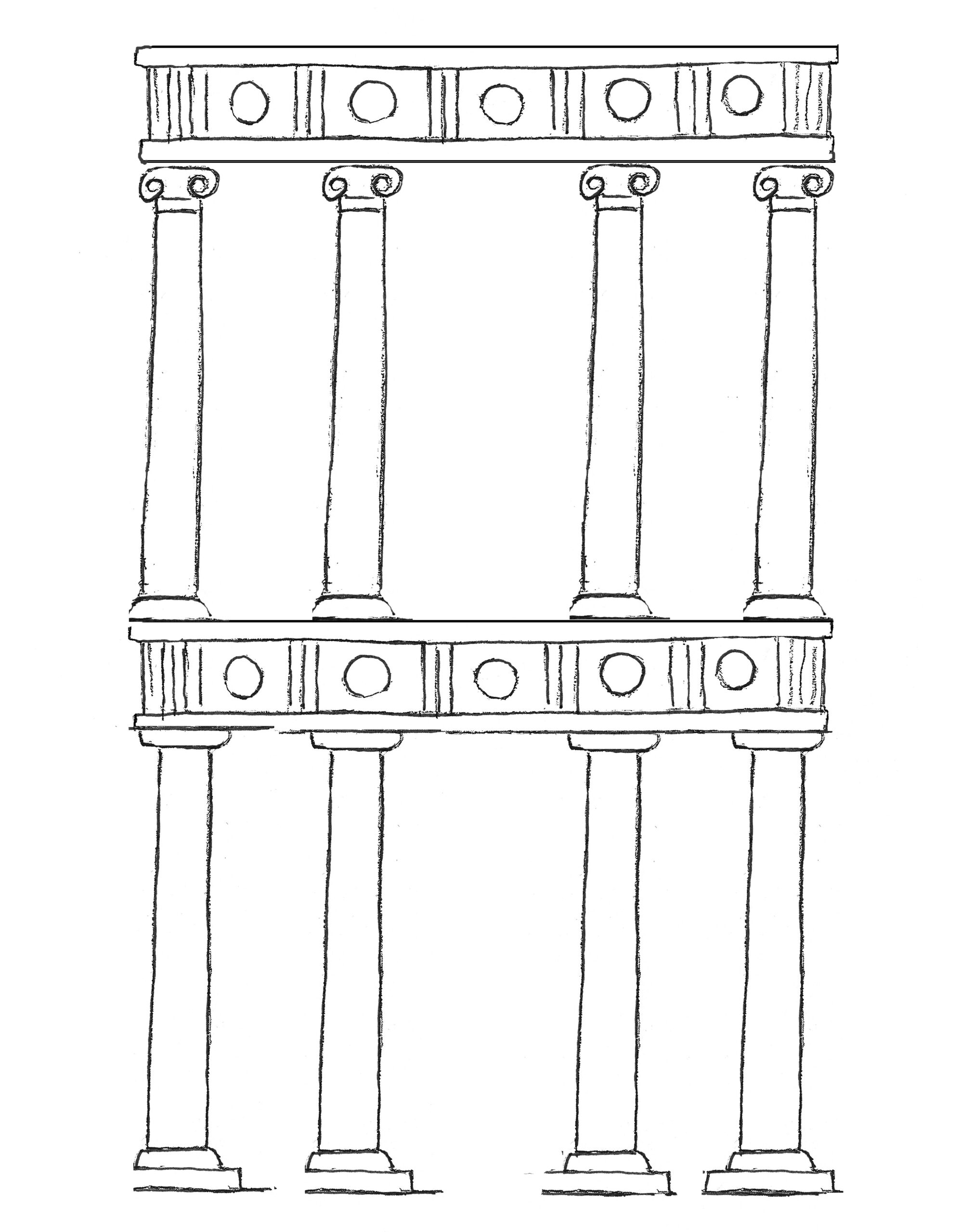 It can go even higher!
It can go even higher!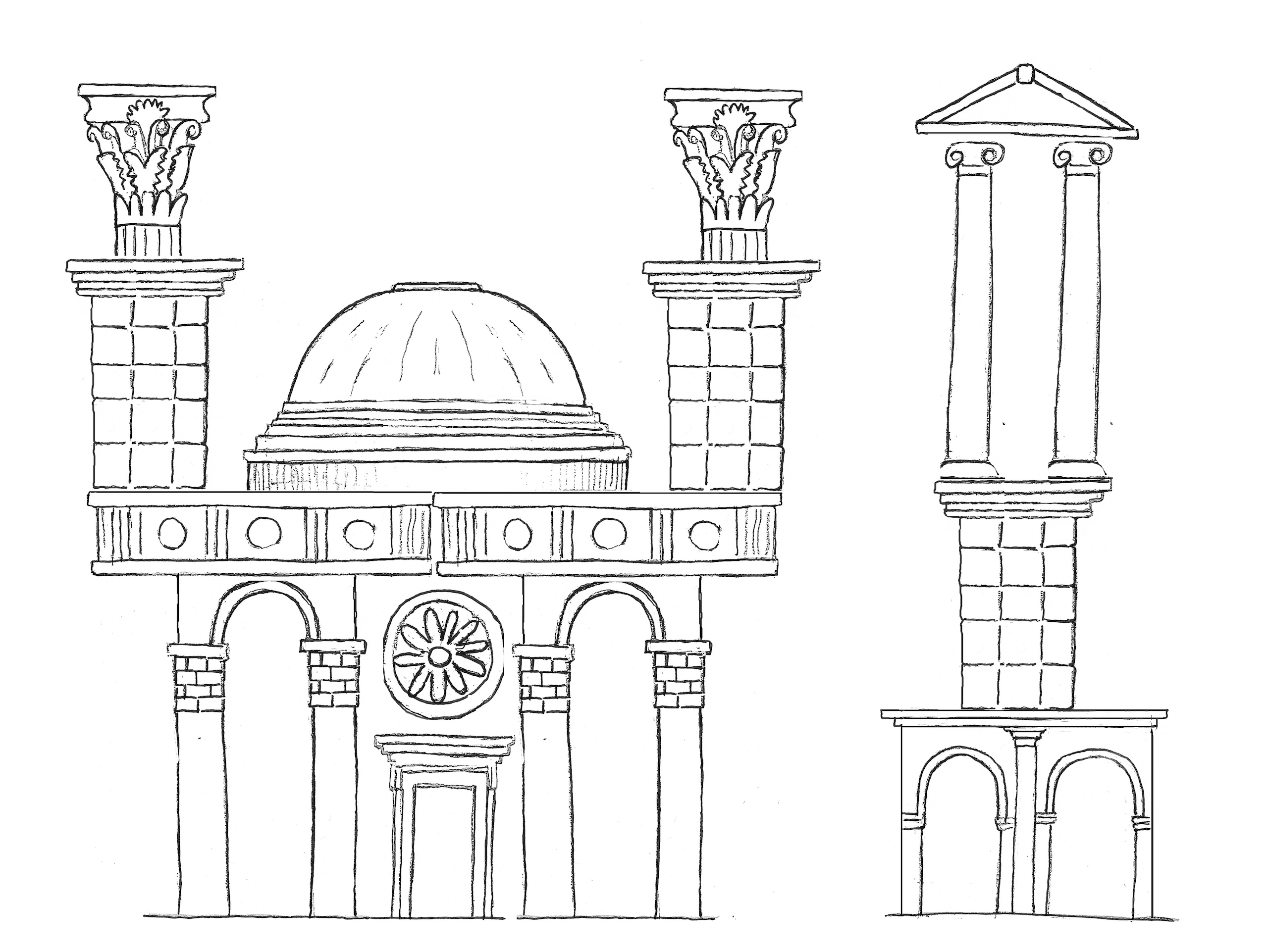
You can color everything in your Lego building. Greek temples were often painted with bright colors. Unfortunately, the paint has completely disappeared after thousands of years.
Therefore, for a long time, people thought that temples were only the color of stone.